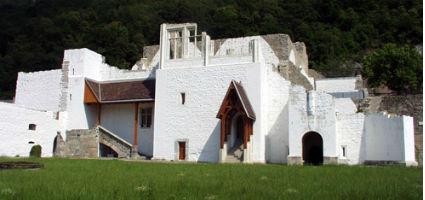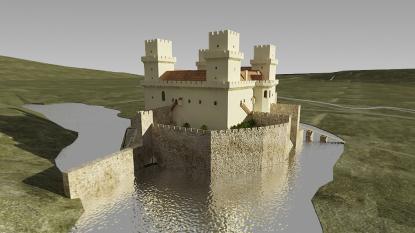2024. May 2. Thursday
Hungarian National Museum King Mathias Museum - Visegrád
 |
Address: 2025, Visegrád Fő utca 23.
Phone number: (26) 597-010
E-mail: info@visegradmuzeum.hu
Opening hours: Tue-Sun 9-17
|
The exhibition has closed for visitors.
2010.09.24. - 2011.09.30.
Museum tickets, service costs:
|
Ticket for adults
|
1100 HUF
|
/ capita
|
|
Ticket for adults
(valid for the Historic Park of Play )
|
200 HUF
|
/ capita
|
|
Ticket for students
|
550 HUF
|
/ capita
|
|
Ticket for children
(valid for the Historic Park of Play )
|
400 HUF
|
/ capita
|
|
Ticket for pensioners
|
550 HUF
|
/ capita
|
|
Ticket for families
(2 adults + 2 children)
|
2500 HUF
|
/ family
|
|
Ticket for families
(1 parent + children)
|
1400 HUF
|
/ family
|
|
Guide
("in the Royal Palace)
|
0 HUF
|
/ 10500
|
|
Guide
(in the Royal Palace, 60 min.)
|
6300 HUF
|
|
|
Guide
(/120 min./)
|
8900 HUF
|
The 14th century was the brightest times in Hungary and Central Europe. It was mainly due to King Charles I of Hungary who made peace between monarchs in Eastern-Central Europe in Visegrád in 1335. With this, peace and safety ruled for the next half a century. Peace resulted in economic, cultural heyday in Hungary, Poland and Bohemia.

The aim of the exhibition is to recall the period and honour Charles I, the founder of Visegrád, and the constructors of the Royal Palace on the 700th anniversary of the coronation of the king. The exhibition presents restored Anjou letters that were found during the latest researches of the Visegrád Museum. With the letters, we wish to provide insight into what the town of Visegrád and the resident town of the Anjous were like in the 14th century. In addition, we want to show the most important constructions of the period of King Charles and his son, Luis I.
The first section presents the seat of the king and additional residences of the king: the castle of Visegrád, the palace, the Royal Palace in Buda, the Diósgyőr Castle and Óbuda that was owned by the king those days but was later on bestowed to the Queen. The presentation is through computer animation. We paid extra attention to ornaments in the royal palaces and castles that turned up during those days.
The second section introduces Anjou Visegrád with its churches, houses and workshops via finds from the latest excavations. The material among others consists of the tombstone of the carpenter of King Luis, casting forms for the 280 diameter bell once owned by the master Konrád, and a numismatics rarity: a test mint of King Charles' garas.

The aim of the exhibition is to recall the period and honour Charles I, the founder of Visegrád, and the constructors of the Royal Palace on the 700th anniversary of the coronation of the king. The exhibition presents restored Anjou letters that were found during the latest researches of the Visegrád Museum. With the letters, we wish to provide insight into what the town of Visegrád and the resident town of the Anjous were like in the 14th century. In addition, we want to show the most important constructions of the period of King Charles and his son, Luis I.
The first section presents the seat of the king and additional residences of the king: the castle of Visegrád, the palace, the Royal Palace in Buda, the Diósgyőr Castle and Óbuda that was owned by the king those days but was later on bestowed to the Queen. The presentation is through computer animation. We paid extra attention to ornaments in the royal palaces and castles that turned up during those days.
The second section introduces Anjou Visegrád with its churches, houses and workshops via finds from the latest excavations. The material among others consists of the tombstone of the carpenter of King Luis, casting forms for the 280 diameter bell once owned by the master Konrád, and a numismatics rarity: a test mint of King Charles' garas.
